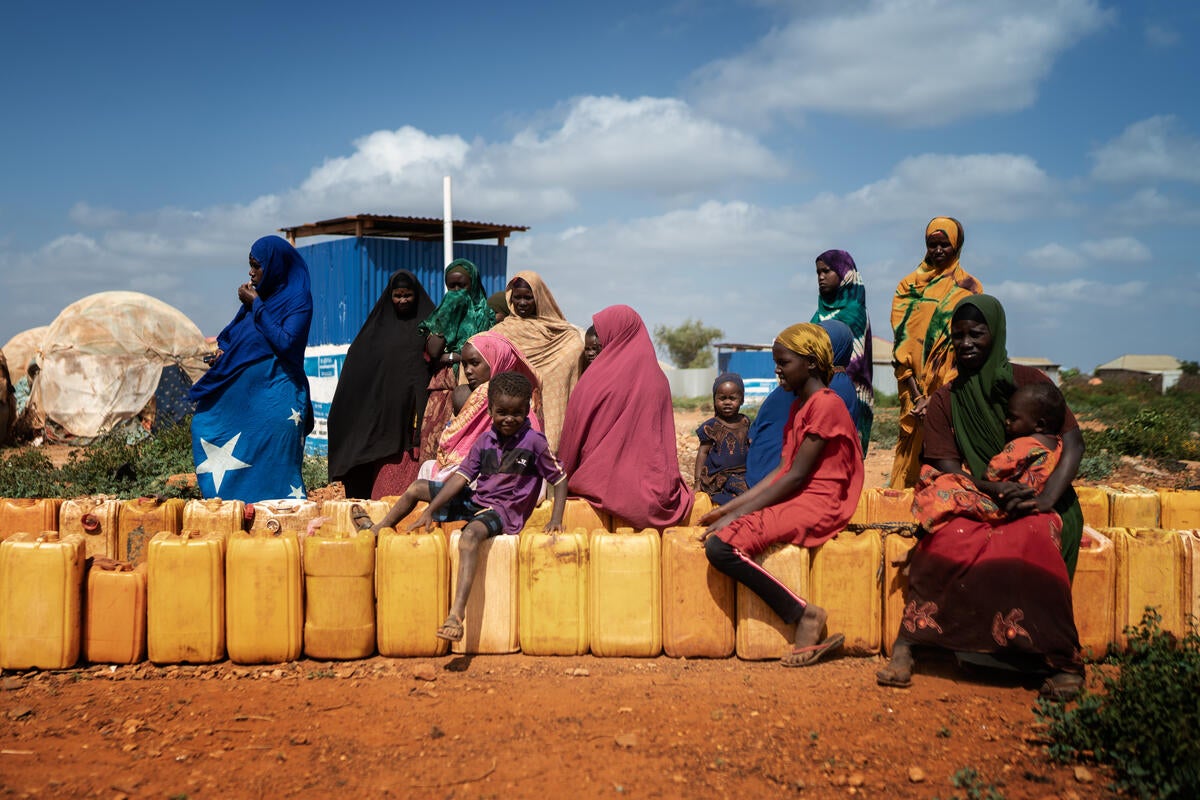ARTICLE AD BOX
Extreme weather fuelled by the climate crisis has cost some of the world’s poorest countries $156 billion (£116bn) across the past two decades, the Independent can reveal.
Intense drought, flooding, cyclones and more have impacted 364 million people and caused more than 42,000 deaths since 2000– 17,000 of which can be directly attributed to climate change. The nations hardest hit are Somalia, Haiti and Uganda.
Researchers at ODI Global, an international think tank, also found the climate crisis had contributed to billions of dollars worth of agricultural losses, with farmers across Somalia and Ethiopia forced to abandon their livelihoods amid growing food scarcity, saying the stark findings should serve as a “wake-up call for global policymakers”.
"If the UK suffered tens of billions of pounds worth of damage caused by other countries' actions, our government and the public would rightfully be shouting from the rooftops about the injustice,” Mike Childs, head of policy at Friends of the Earth told The Independent.
"Yet this is the reality for many countries on the frontlines of climate breakdown that have contributed virtually nothing to global emissions”.
The figures come after Donald Trump slashed US aid spending, with the UK also planning on cutting billions of pounds in funding, with The Independent reporting on the devastating impact for countries most affected by the climate crisis thanks to losing support for food and disaster prevention.
“It’s deeply unjust that those who have done the least to contribute to the climate crisis are paying most dearly for it – the UK has a central role to play in righting that injustice,” Carla Denyer, co-leader of the Green Party, said. “While governments like ours delay, countries like Somalia and Ethiopia, and small island nations - some of the world’s poorest countries - are paying the price.”
“The government’s recent cuts to the foreign aid budget are particularly disturbing in this context, with so many across the world relying on essential humanitarian aid as a result of extreme weather caused by the climate crisis,” added Ms Denyer.
‘Every year we see more devastation’
The study of 53 low-income countries includes 36 small-island developing states in the Caribbean, Pacific and the Atlantic, and 17 countries in the Sahel and the Greater Horn of Africa.
Since the year 2000, these countries suffered $395 billion in losses and damages from extreme weather events, $156bn of which can be attributed to the climate crisis.
“Every year, we see more devastation from the worsening effects of climate change,” said Emily Wilkinson, principal research fellow at ODI Global.

“Wealthier nations urgently need to scale up climate finance and also make sure it reaches the right places. For remote or unstable places [facing conflict or other vulnerabilities], such as those featured in the study, getting projects off the ground might be harder, but the benefits will also be more keenly felt by affected populations.”
In 2023, the Cop28 climate summit agreed to the creation of the Loss and Damage Fund, which would provide financial support for some destruction caused by climate change. But wealthy, higher polluting countries pledged a total of $768 million to the fund; a fraction of the financial losses that vulnerable countries face, and will continue to face. It was agreed this year that the fund will pay out $250 million of this sum until the end of 2026.
Hurricanes, droughts and flooding
To calculate the proportion of losses and damages resulting from climate change, ODI Global’s research uses climate mapping studies combined with figures from EM-DAT, the international database covering 26,000 mass disasters worldwide, and United Nations disaster reports.
Tropical cyclones – often referred to as hurricanes or typhoons – and flooding have caused the most damage in small island developing states like the Bahamas, which has lost at least $4 billion from climate-attributed events.
Scientists believe tropical cyclones are becoming more intense thanks to the climate crisis, due to warmer seas and stronger winds heightening their impact. Meanwhile, rising sea levels from melting ice caps will contribute to increased flooding of low-elevation islands.

Severe droughts and deadly flooding have ravaged the Sahel and the Horn of Africa, severely impacting many communities that rely on agriculture. The ODI Global report found that climate change contributed to at least $11.5 billion in losses and damages to livestock and crops in these countries— causing lasting harm to livelihoods and food supplies in agrarian areas, with already high poverty rates.
Nigeria, Kenya, Uganda and Ethiopia have suffered tens of billions of dollars in losses between them, but Somalia has suffered worst of all. Devastating droughts and subsequent floods have led to $151bn in loss and damages; $75 billion of which ODI Global estimates is attributable to climate change.
Somalia’s extended droughts have been exacerbated by the climate crisis, researchers have found, contributing to lower rainfall, warmer air temperatures, and higher evapotranspiration – or the combined processes that move water from the Earth's surface into the atmosphere.
These droughts in recent years have caused widespread crop failures and livestock losses, plunging many farmers and herders into poverty Nearly half of Somalia’s eight million-strong population have also faced food insecurity. As The Independent has reported, Somalia is facing drought and low crop yields once again; but this time, charities are worried that aid cuts will limit their ability to respond to food shortages.
Many of the nations included in the ODI Global study have smaller economies, increasing the impact of climate crisis-related losses. On the Caribbean island of Dominica, such damage has cost nearly a tenth (9.25 per cent) of gross domestic product (GDP) each year on average over the last two decades.
Haiti, Kenya and Grenada are among the nations already facing substantial losses, more than two per cent of their GDP per year, thanks to climate change. Extreme weather events such as hurricanes can increase that number substantially, given the damge that can do quickly.
This means that poorer nations, some of whom are facing further strain from regional conflicts, are disproportionately taking the brunt of climate-related destruction.
These effects will only continue to get worse, warn ODI Global’s researchers; estimating at least a further $235 billion in these countries from climate-related damages if the planet warms by 2°C compared to pre-industrial levels. According to climate scientists at Europe’s Copernicus Climate Change Service (C3S), each of the past 10 years (2015–2024) was one of the 10 warmest years on record. The monthly global average temperature exceeded 1.5°C above pre-industrial levels for 11 months of the year.
"The escalating costs from climate change will have a serious toll on economic growth and living standards, and a wider risk of geopolitical stability in some regions,” said Ms Wilkinson, a research fellow at ODI Global. “Climate change contributing to a poorer, more dangerous, future is bad for everyone but we are not too late to change course.”

Disruptions to aid increase risk of famine and poverty
In the wake of extreme weather events, communities are heavily reliant on aid as people are displaced from their homes and access to food and infrastructure are disrupted.
In 2023 alone, the countries in this study received some £7.5 billion in aid from the US and UK, with millions of people relying on life-saving food assistance.
But with the total dismantling of the US Agency for International Development (USAID), and UK cuts threatening access to aid for some 55 million people, this support is drying up; but the consequences of climate change are worsening.
In Ethiopia, food shortages in the Northern region have led to starvation. But a funding gap of $222 million has already forced the World Food Program to suspend malnutrition treatment for 650,000 women and children.
Just this week, the government refused to reconsider its cuts to aid spending, and could not commit to funding for nutrition, the International Development Committee reported.
A spokesperson for the UK’s Foreign, Commonwealth and Development Office said: “Demands for action from the world’s most vulnerable and the requirements for delivering security for British citizens are fundamentally aligned.
“That is why we are supporting those who are experiencing the worst impacts of the climate crisis and working together with partners to meet the objectives of the Paris Agreement."
This article was produced as part of The Independent’s Rethinking Global Aid project









 English (US) ·
English (US) ·